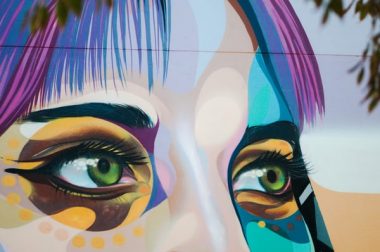Art
SENIOR CYCLE ART
Teacher: Maria Curtin
Brief Overview of Subject:
The current Leaving Certificate Art Examination includes three components: Practical Coursework, Life Drawing, and History and Appreciation of Art.
Practical Coursework: (50%)
Students complete a project over 10 weeks after a brief is issued by State Examinations Commission in January of Year 2. The project requires students to research themes and develop a Still Life or Imaginative Composition from a theme. Students also develop and complete one Craft from their chosen theme.
Life Drawing Examination: (12.5%)
Students complete two life drawings in one hour, in May of Year 2.
History and Appreciation of Art: (37.5%)
Students write three essays, one essay from Irish Art, one essay from European Art, and one essay from Appreciation of Art. This is a 2.5 hour examination in June after Year 2.
The revised Leaving Certificate Art Assessment will be examined for the first time in June 2023. The following is a brief overview of the subject:
Art is both creative and expressive and it provides an opportunity for the development of the skills necessary for creative engagement with the world.
Senior Cycle Art incorporates three inter-related and inter-dependent strands: Research, Create and Respond. Studying Art gives the learner diverse knowledge, skills and values by experiencing a wide variety of ideas, practices and media. Art enables learners to develop many skills that are conceptual and practical. It promotes creative and critical thinking, and supports the development of problem-solving skills.
Research Strand
Learners learn by and through looking, using primary sources or examples of significant works of Visual Studies; by Recording and documenting their thoughts, ideas, findings and observations in their sketchpads; through Experimenting and interpretation of what they observe and the work and ideas they then develop; by being cognisant of the evolving world around them through Contextual enquiries and by explicitly following a Process. Some of the learning outcomes in the Research Strand can also apply to both the practical making of work and to Visual Studies.
Create Strand
In learning to create work, the learning outcomes describe and capture the Making involved; the use of Contextual enquiries, especially in learning to understand and use the art elements and design principles; the Process involved in following lines of enquiry and deciding on the realised work; the knowledge, skills and understanding required to communicate through the Realisation/Presentation of their work. Some of the learning outcomes in the Create Strand can apply to both the practical making of work and to Visual Studies.
Respond Strand
The learning outcomes related to Responding involve the use of Analysis; the making of Contextual enquiries to further understanding and knowledge; looking at ways to judge Impact and value; employing Critical and personal reflection; and learning to think about and rationalise their Process. Some of the learning outcomes in the Respond Strand can also apply to practical making of work and to Visual Studies.
Coursework Assessment
The coursework assessment includes two related but separate components – practical coursework and a practical examination – which will be completed in the final year of study. Both pieces of work will be based on the same stimulus, which will be chosen by the learner from a coursework brief issued by the SEC.
PRACTICAL COURSEWORK (50%) The practical coursework component is designed to test the learner’s ability to use the knowledge, concepts and skills developed in their study of Art to produce a realised work, from a stimulus, over an extended time period. The use of primary sources, including observational drawings, life drawing and drawing from the imagination are important. Learners will receive the SEC coursework brief at the beginning of Term 2 (Year 2). In the brief, the SEC will outline the time period in which the practical coursework must be completed. During this period, learners will be required to realise one piece of work and plan and develop work for the realisation of a second piece of work during the practical examination.
THE PRACTICAL EXAMINATION (20%) The practical examination component will take place as soon after the completion of the practical coursework component as possible, and within 5 hours of a single day. Information on the examination will be included in the coursework brief issued by the SEC. Learners will create a second realised work for this examination, based on the same stimulus and the ideas and work they researched and developed during their overall coursework project.
WRITTEN EXAMINATION (30%) The written examination will have a range and balance of question types suited to Visual Studies and the application of practical knowledge. The questions will focus on a broad understanding of Visual Studies and will require learners to demonstrate knowledge and understanding, and an ability to apply, analyse, evaluate and respond as appropriate. The written examination paper will assess: recall, knowledge and understanding of art and Visual Studies, application of practice, knowledge and understanding from different areas of the specification to familiar and unfamiliar situations, critical thinking, the ability to analyse and evaluate information and to form reasonable and logical arguments based on evidence, problem-solving skills in relation to Visual Studies and the practical application of art, the ability to process information and articulate a personal understanding. All questions will rely on the learner’s understanding of Visual Studies and their critical and creative use of visual language to analyse artwork. It is envisaged that the written examination paper will be 2.5 hours long.

